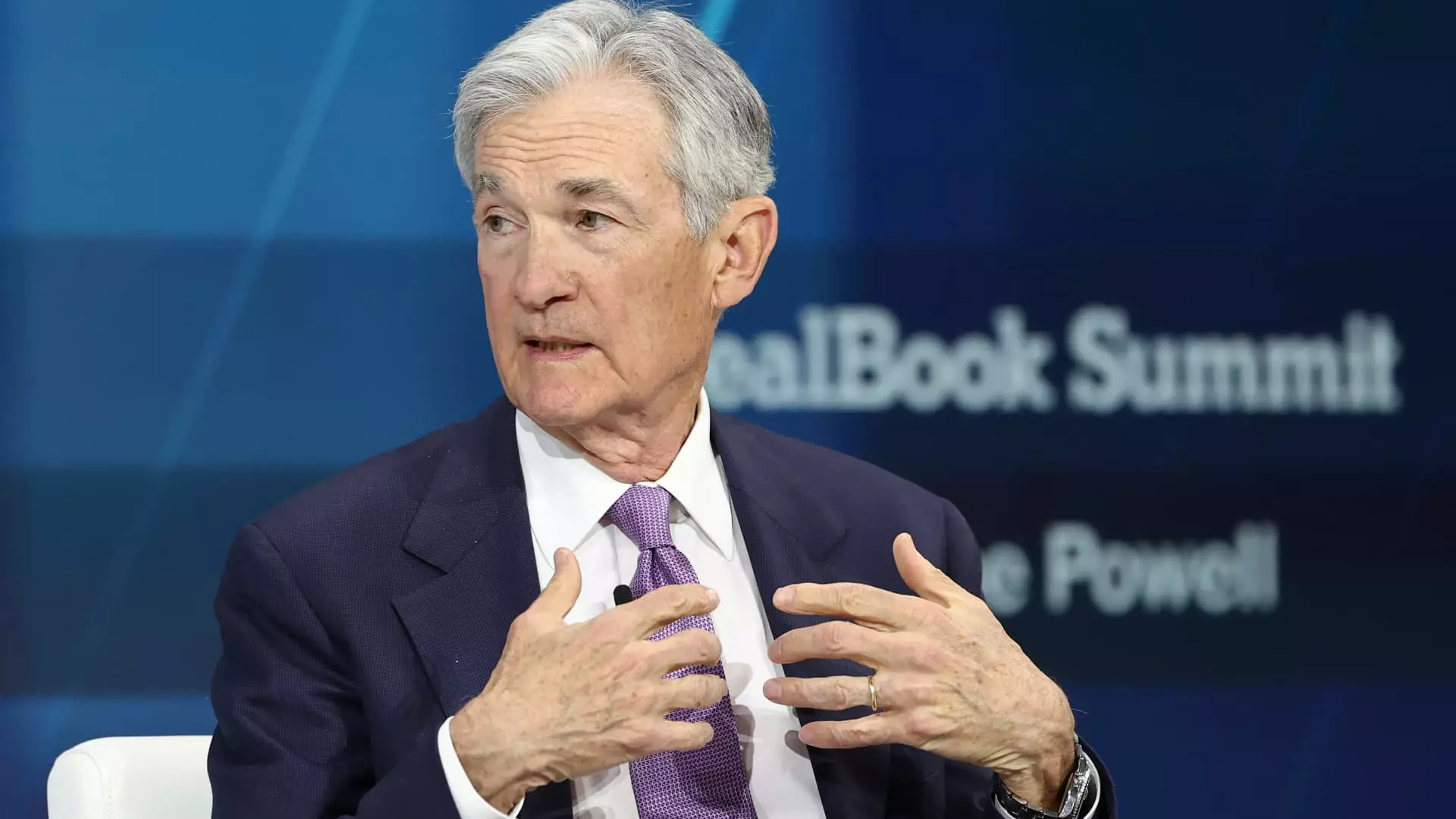In recent discussions surrounding the cryptocurrency market, the influence of Federal Reserve Chair Jerome Powell has emerged as a focal point. His observations about Bitcoin during a CNBC interview ignited fresh enthusiasm within the crypto community, illustrating a complex interplay between regulatory viewpoints and market reactions. Powell’s assertion that Bitcoin serves more as an asset akin to gold rather than a currency poses intriguing questions regarding the cryptocurrency’s identity and its implications in both the financial and regulatory landscapes.
Powell explicitly stated that Bitcoin does not pose a threat to traditional currencies such as the US dollar. Rather, he aligns it more closely with gold, framing it as a speculative asset. His words, laden with caution, highlight a critical distinction: while Bitcoin may share market space with conventional currencies, its volatility and usage paradigms set it apart. Essentially, Powell suggests that Bitcoin’s role is more aligned with that of a high-risk investment than a reliable medium of exchange.
Importantly, Powell’s disclaimer that he cannot own cryptocurrencies adds another dimension to his remarks. It reflects the cautious stance that monetary authorities must take, given the potential risks and regulatory complexities involved. These complexities come not only from the assets themselves but from their capacity to influence broader economic stability.
Despite the circumspect nature of Powell’s comments, they unexpectedly validated Bitcoin in the eyes of investors. Following his statements, Bitcoin saw an impressive 4% spike, crossing the $103,000 threshold once more. This reaction speaks volumes about the investor psyche in the evolving crypto landscape; market participants consistently seek signals of legitimacy and support from established financial authorities to underpin their speculative bets.
Joel Kruger, a noted market strategist, categorized Powell’s comparison to gold as a pivotal endorsement, asserting that it conveys a new layer of credibility to Bitcoin. The acknowledgment from a figure of Powell’s stature seemingly legitimizes Bitcoin as a significant component of global financial markets, one capable of complementing traditional investments such as gold.
While Powell highlighted that gold’s market presence dwarfs that of Bitcoin, this comparison opens avenues for analysis regarding Bitcoin’s growth potential. With gold dominating the market at around ten times the size of Bitcoin, it presents a lens through which to examine Bitcoin’s path forward. If Bitcoin continues to gain traction as a digital gold, its trajectory may reflect an upward momentum that surpasses even the most optimistic projections.
The current trends showcase Bitcoin’s substantial growth post-election, while gold has remained relatively stagnant. This presents a unique set of dynamics in asset allocation—investors might be progressively leaning towards the digital asset for diversification and speculative purposes, particularly as macroeconomic environments shift and adapt.
The political context surrounding these financial discussions cannot be overlooked. Notably, Powell’s comments coincided with the formal announcement of Trump’s nomination of Paul Atkins for the chair of the Securities and Exchange Commission (SEC)—a nomination expected to have a significant influence on crypto regulatory frameworks. Atkins’ pro-crypto stance juxtaposed with Powell’s views may influence market stability and investor confidence, potentially steering the direction of regulations in ways that favor digital assets.
As the results of these regulatory appointments unfold, the dynamics of Bitcoin and its counterparts are likely to shift. Investors and market participants will be watching closely to gauge how new regulatory philosophies might reshape the operational landscape for cryptocurrencies.
In summation, Bitcoin’s association with mainstream financial authorities is pivotal for its ongoing narrative in the market. Powell’s comments, while cautionary, provide a vital recognition of cryptocurrency’s place in the modern financial ecosystem. This newfound endorsement aligns Bitcoin closer to the realm of credible investment assets, distinguishing it from its early categorization as mere speculative influence.
Moving forward, the cryptocurrency landscape is poised for growth, driven by evolving perceptions, regulatory frameworks, and geopolitical developments. As Bitcoin continues to carve its niche, it remains to be seen how these factors will coalesce and shape its evolution in the global market.

